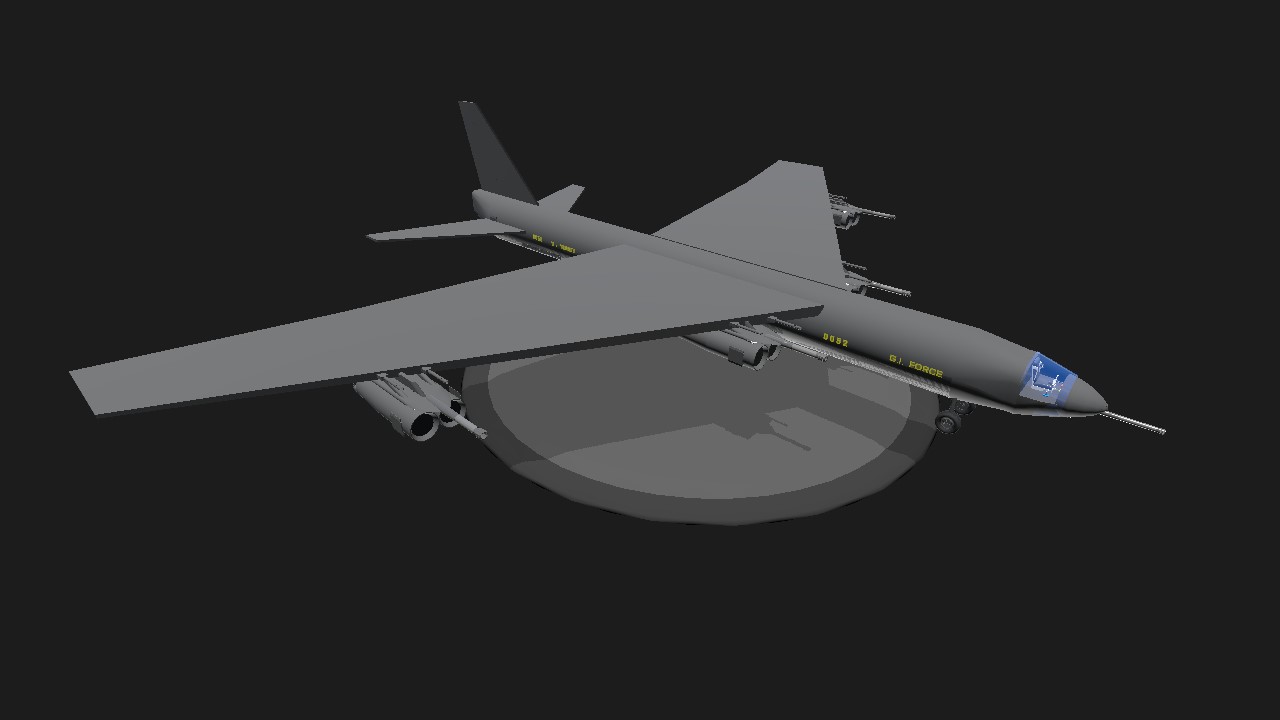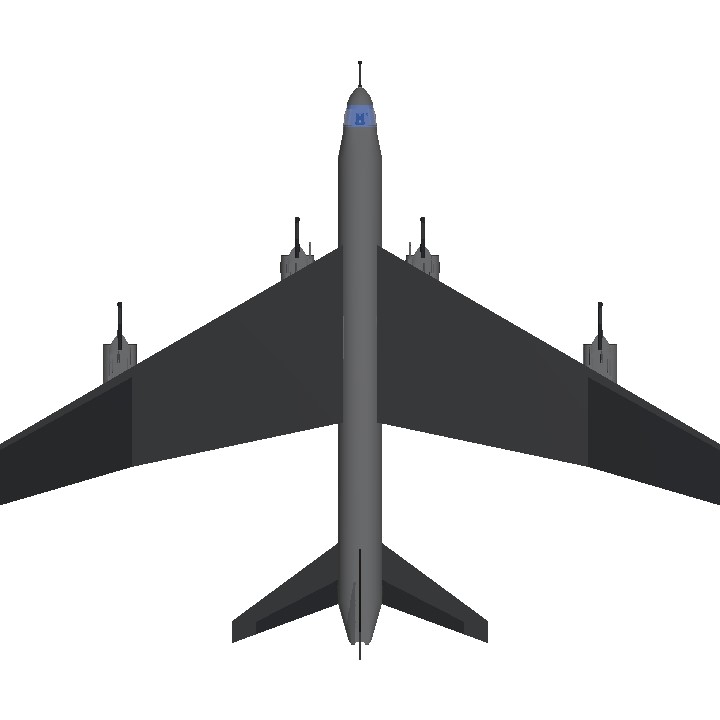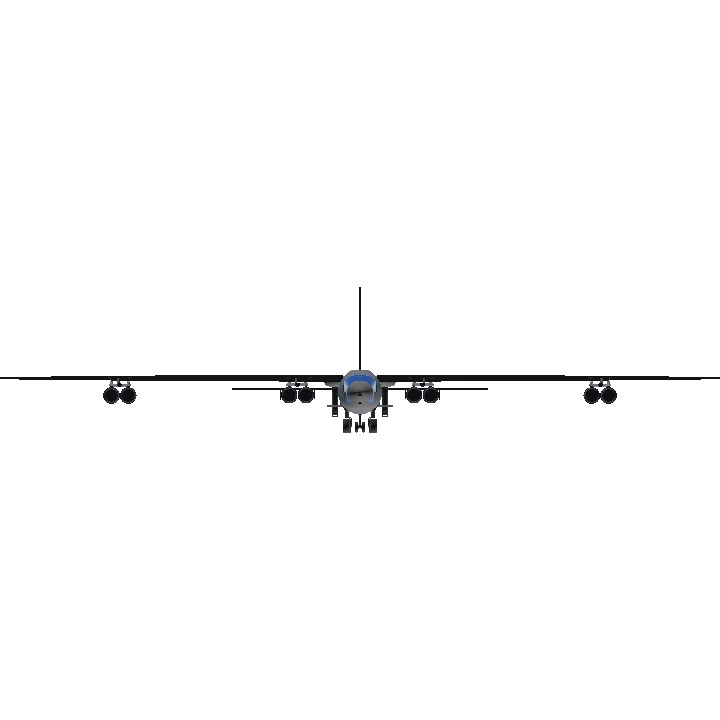This is the latest developed bomber that will be developed later. Well, the design prototype is B-52. Function aware cockpit. There are 50 bombs of different sizes exclusively in the cabin. Also responsible for preparing atomic bomb(Torpedo). The maximum speed exceeds 2,000mph!(Tactical escape speed) Designers Prototype history: B-52 bomber (: B-52 long-range subsonic jet-powered strategic bomber , nickname: Stratofortress, translation: Stratofortress, commonly known as Boeing B-52 "Stratofortress") It is an eight-engined long-range strategic bomber.The B-52 bomber is used to replace the B-36 bomber for strategic bombing missions. It was developed by Boeing of the United States and proposed the design in 1948. The first prototype flew in 1952. The batch-produced models were delivered in 1955. The B-52A, B, C, D, E, F, G and H were developed successively. Production ceased in 1962. A total of 744 were produced. There are 76 B-52s in service, and they remain the mainstay of the Air Force's strategic bombing campaign, and the Air Force budget keeps the B-52s in service until 2050. This puts the service life at 90 years. One reason the U.S. military is willing to keep the B-52 in service is that it is the only type of U.S. strategic bomber that can fire cruise missiles.In October 2022, the Boeing Company of the United States released the complete image of the upgraded version of the B-52 strategic bomber, which replaced the Rolls-Royce F130 turbofan engine and the new active phased array radar, which can be regarded as a new and improved version. The bomber would most likely be named B52J or B52K. The B-52 bombers entered service in 1955, and the current B-52H entered service in 1961, 59 years ago. The introduction of the upgraded B-52 bombers heralded a sleeker and more technological appearance, with the possibility of serving in service until 2050.
Specifications
General Characteristics
- Created On Android
- Wingspan 106.4ft (32.4m)
- Length 88.3ft (26.9m)
- Height 21.4ft (6.5m)
- Empty Weight N/A
- Loaded Weight 142,712lbs (64,733kg)
Performance
- Power/Weight Ratio 4.96
- Wing Loading 68.3lbs/ft2 (333.4kg/m2)
- Wing Area 2,089.9ft2 (194.2m2)
- Drag Points 11913
Parts
- Number of Parts 371
- Control Surfaces 5
- Performance Cost 2,240




